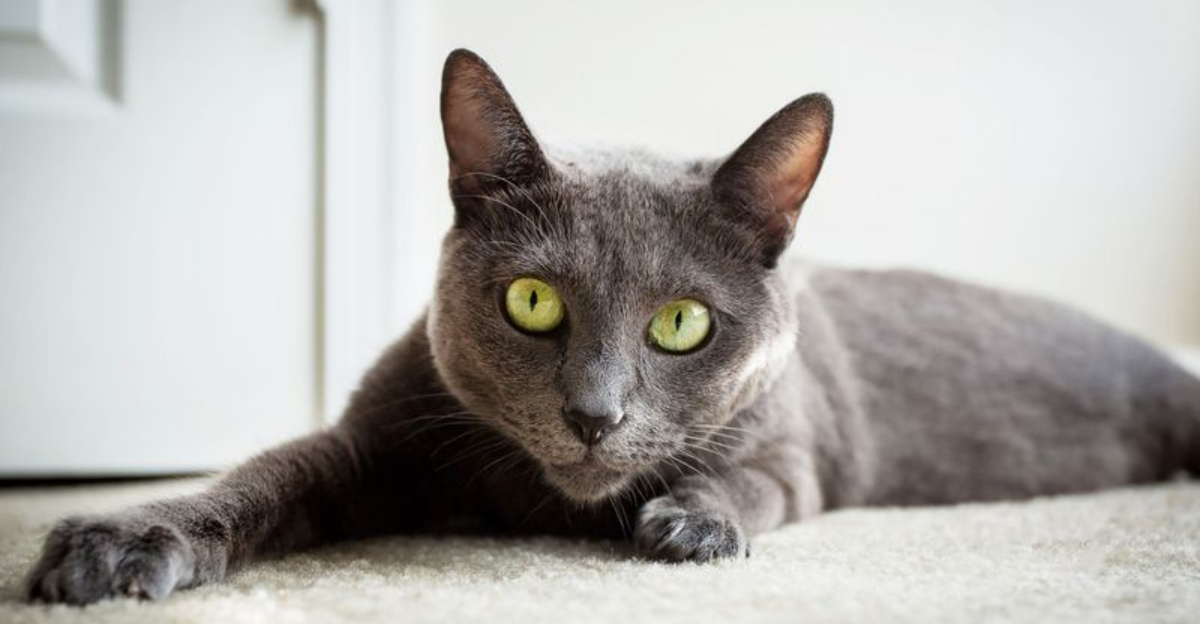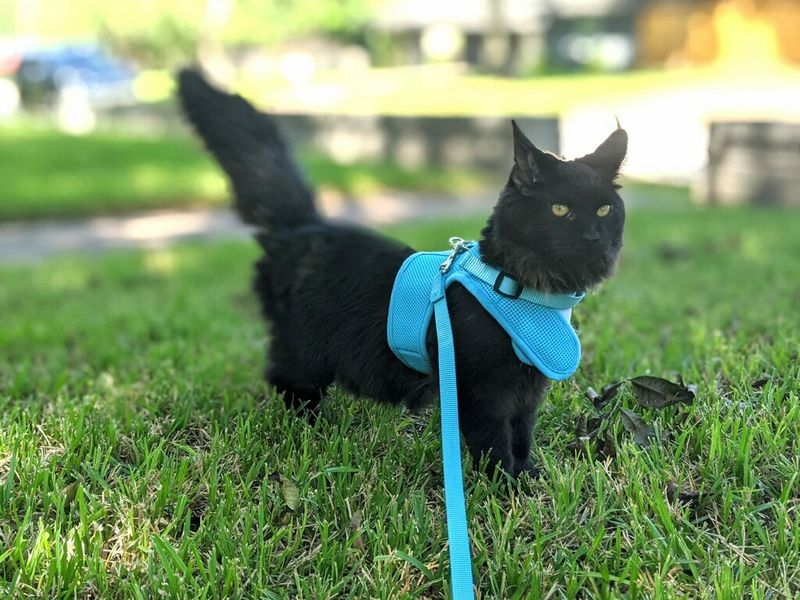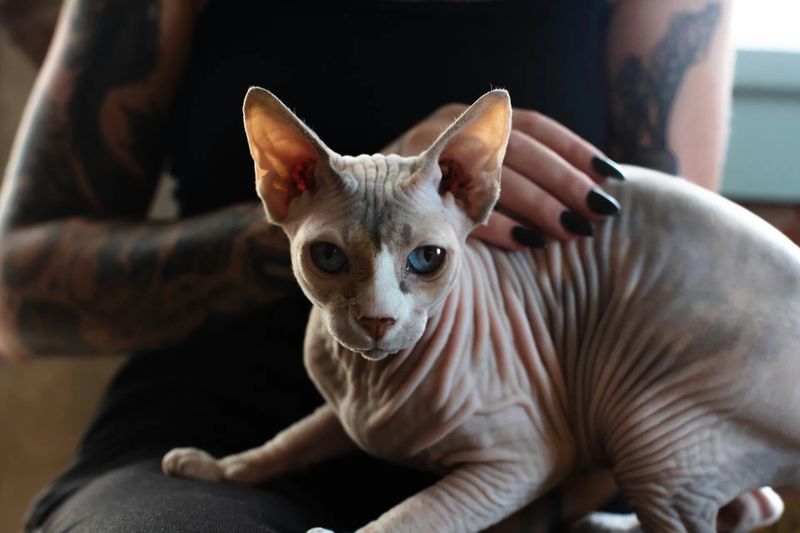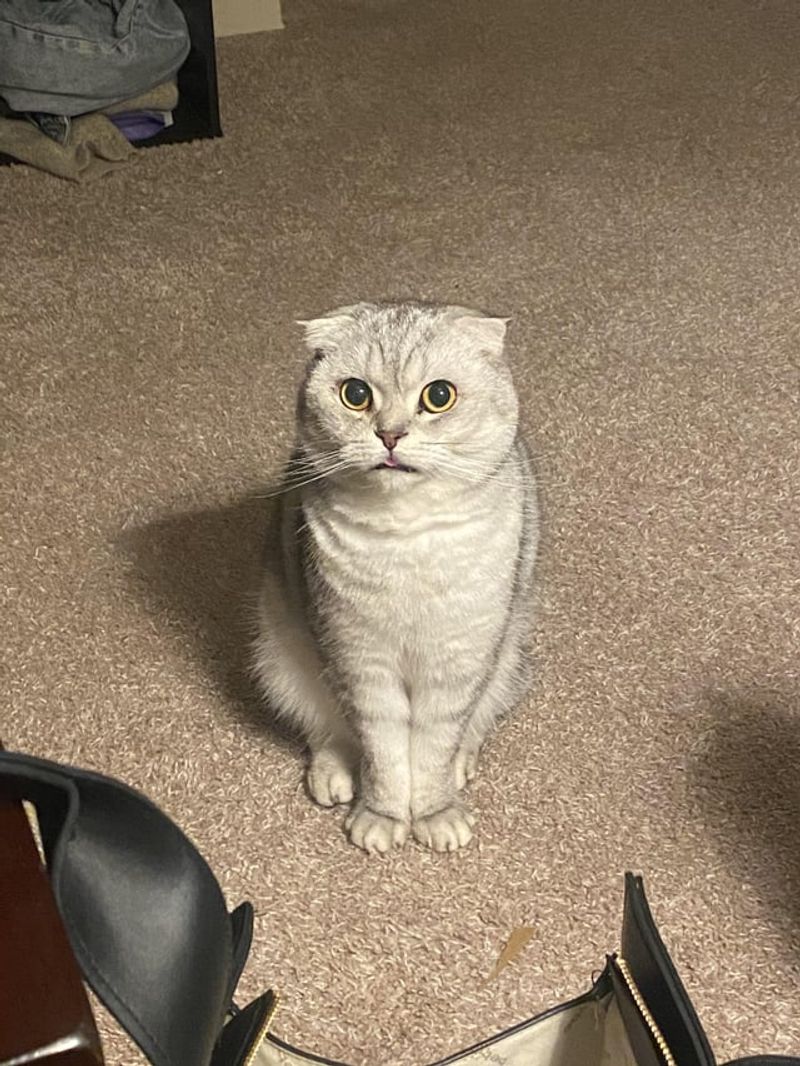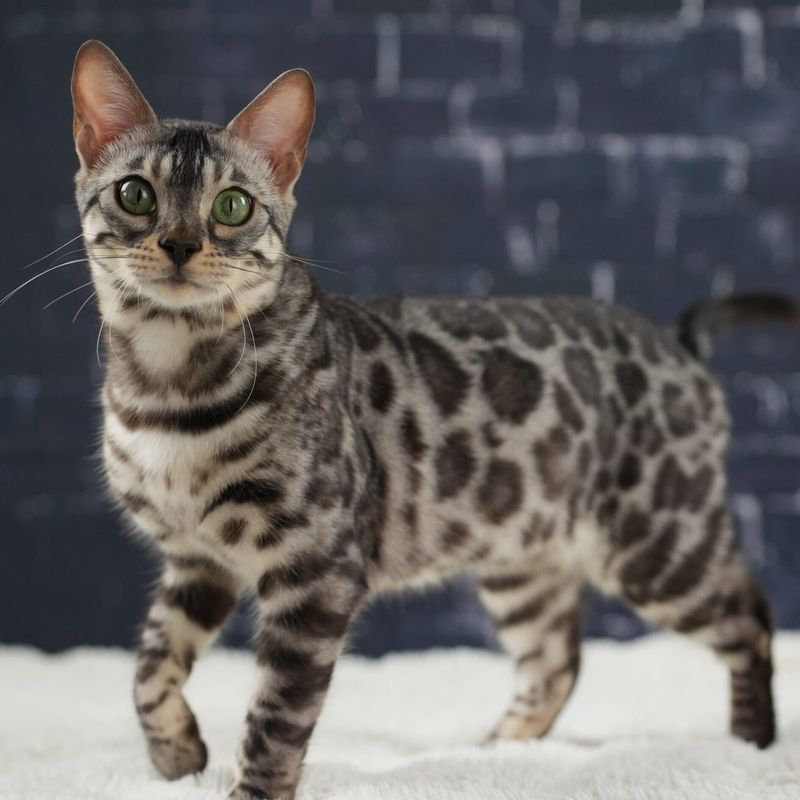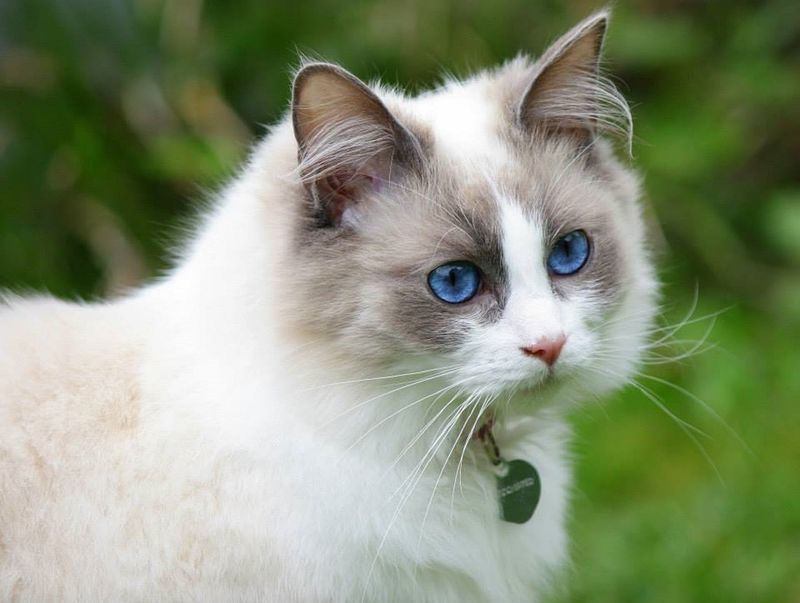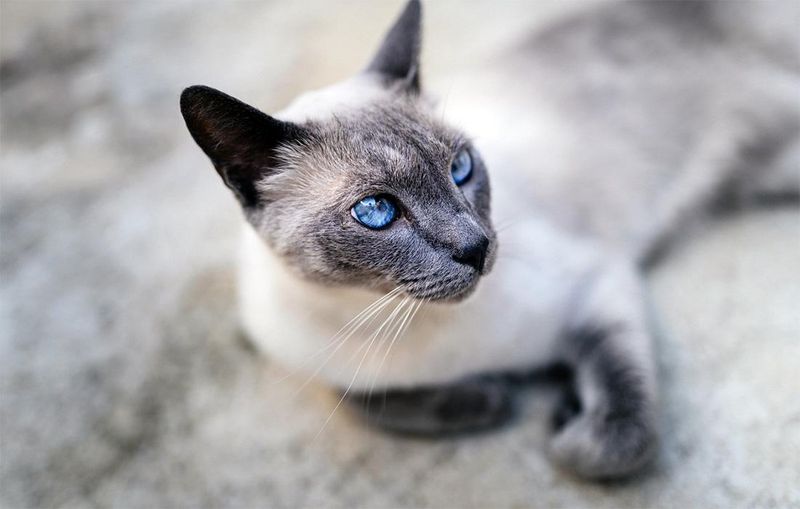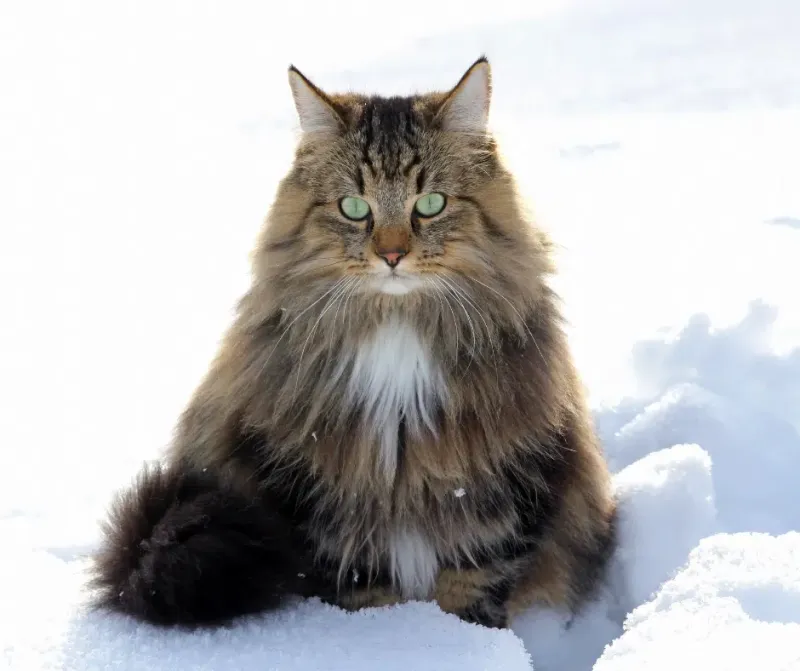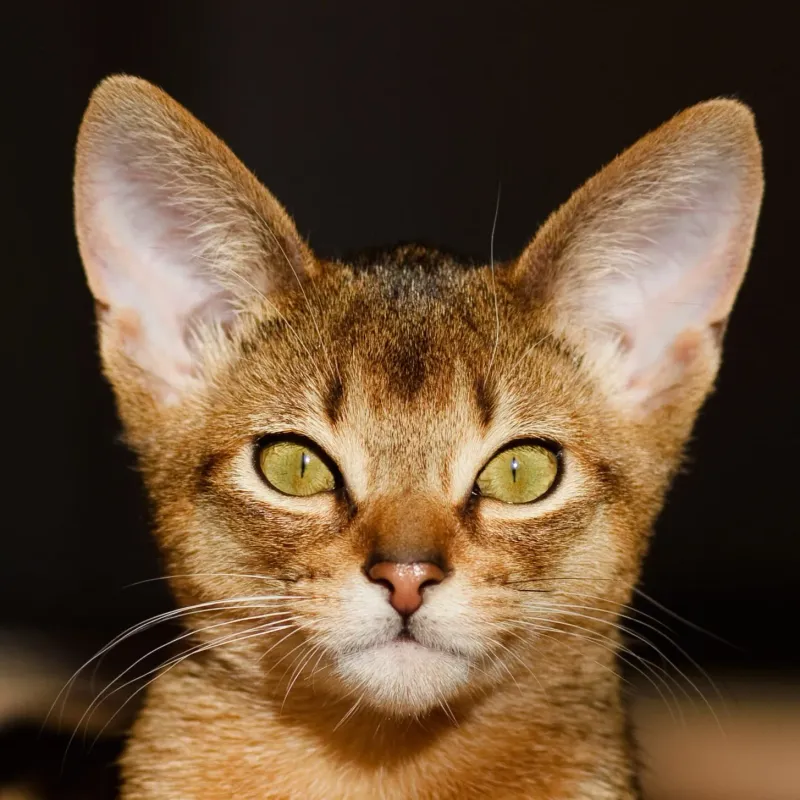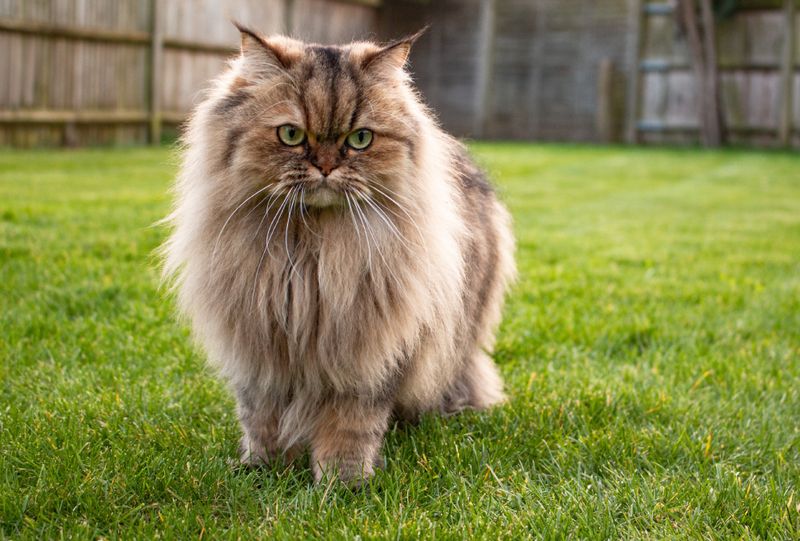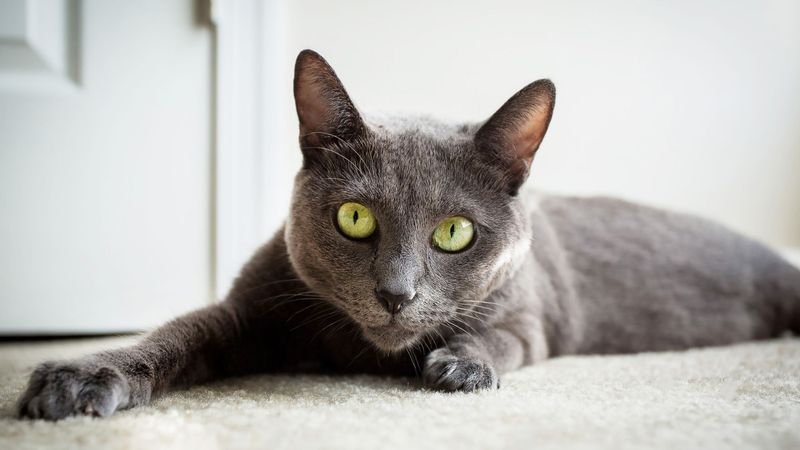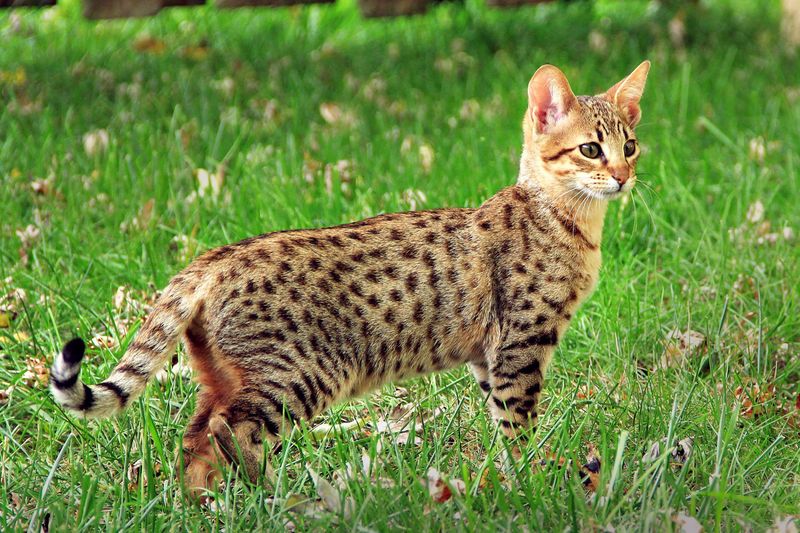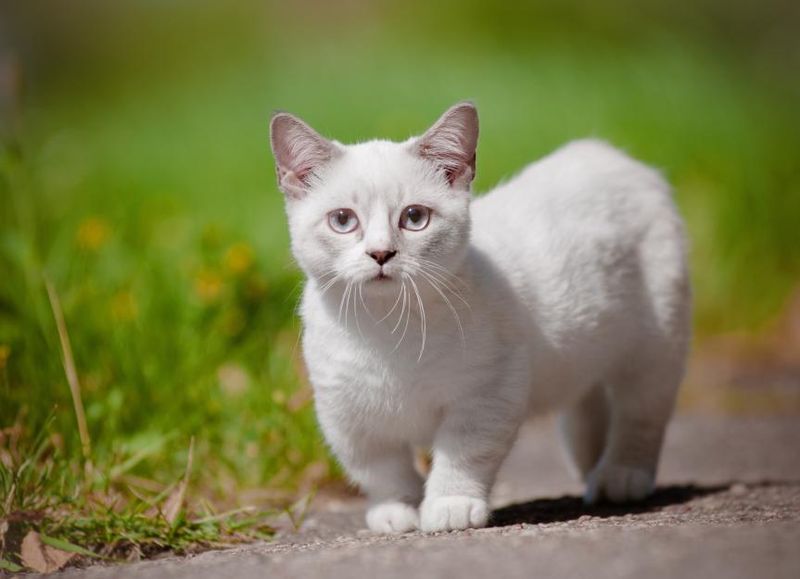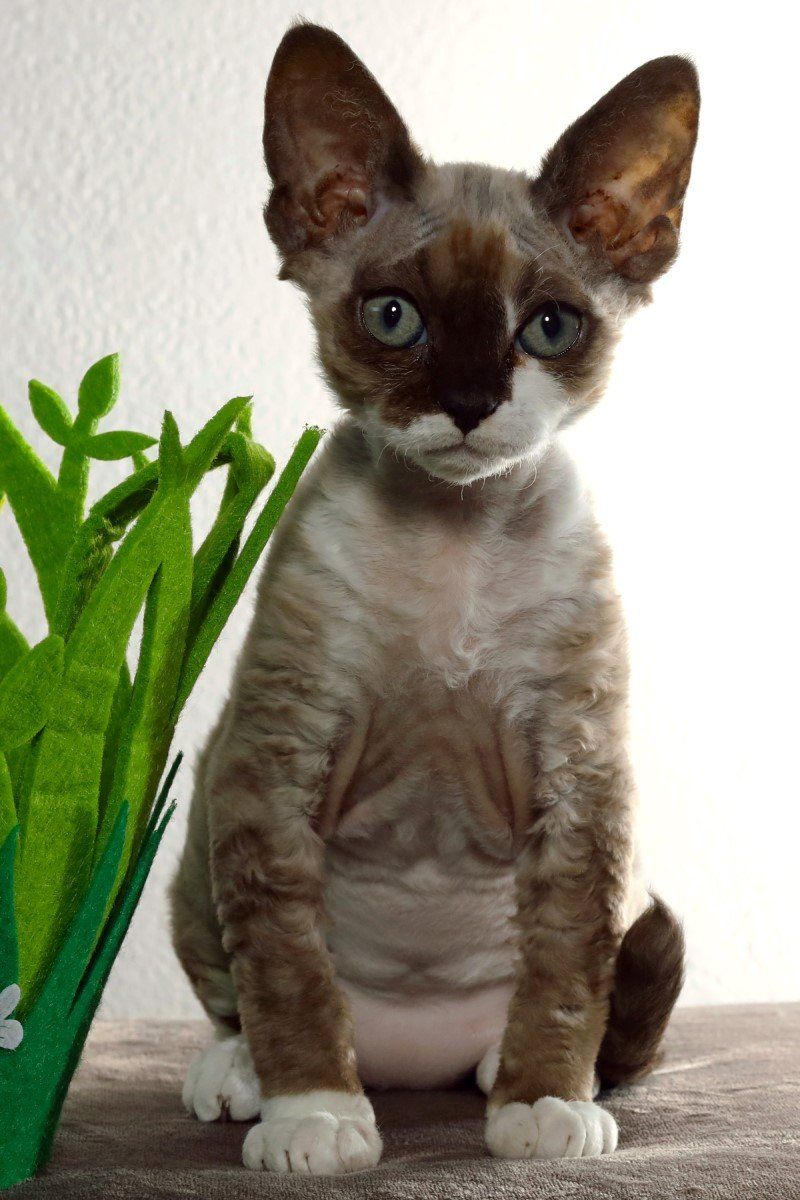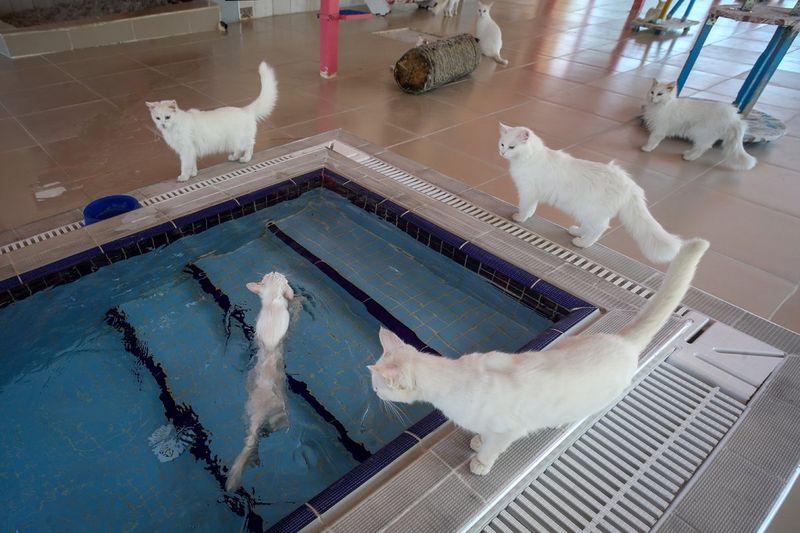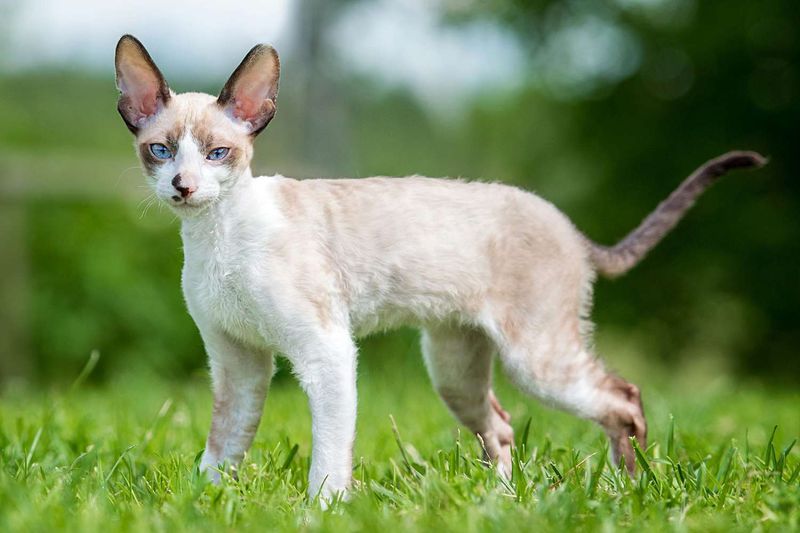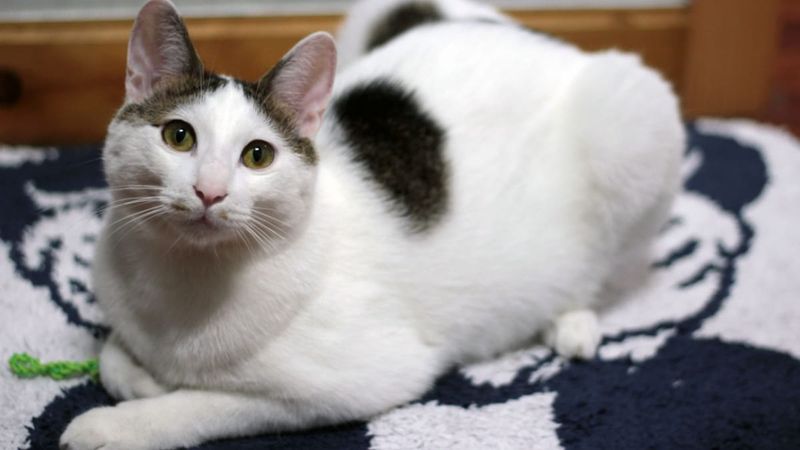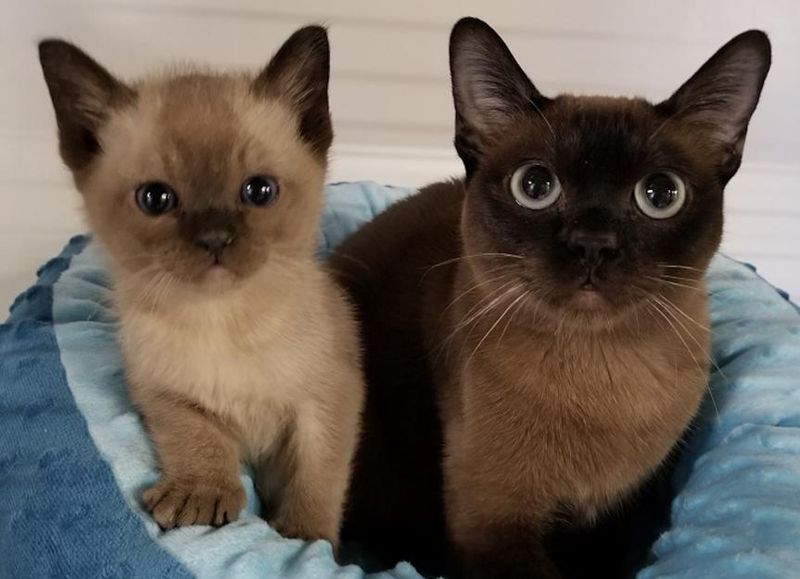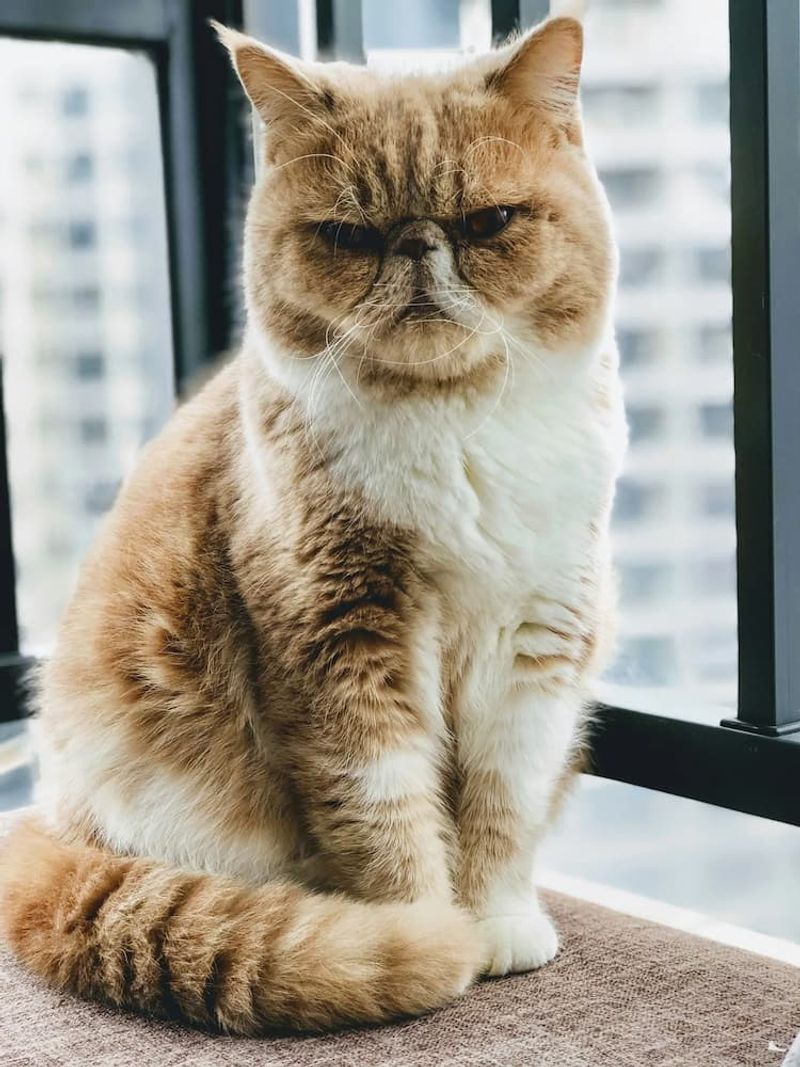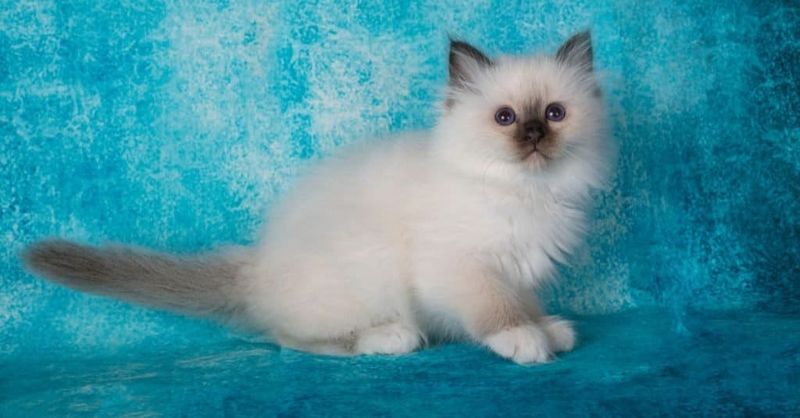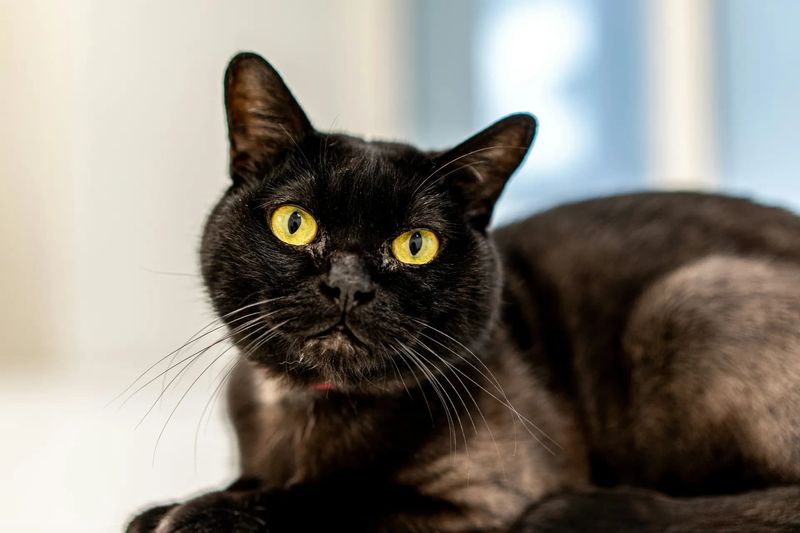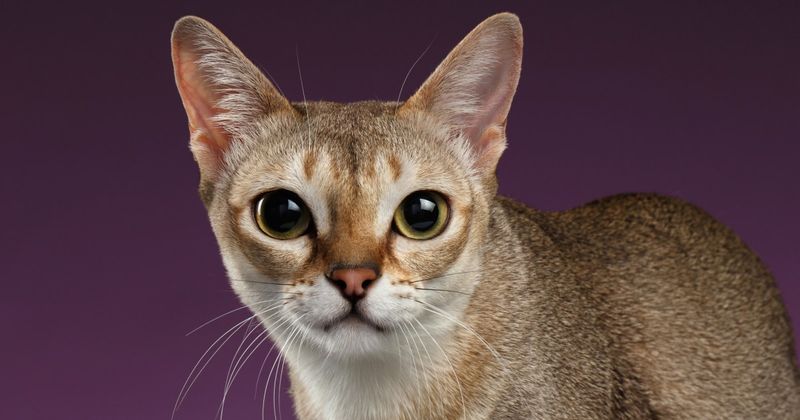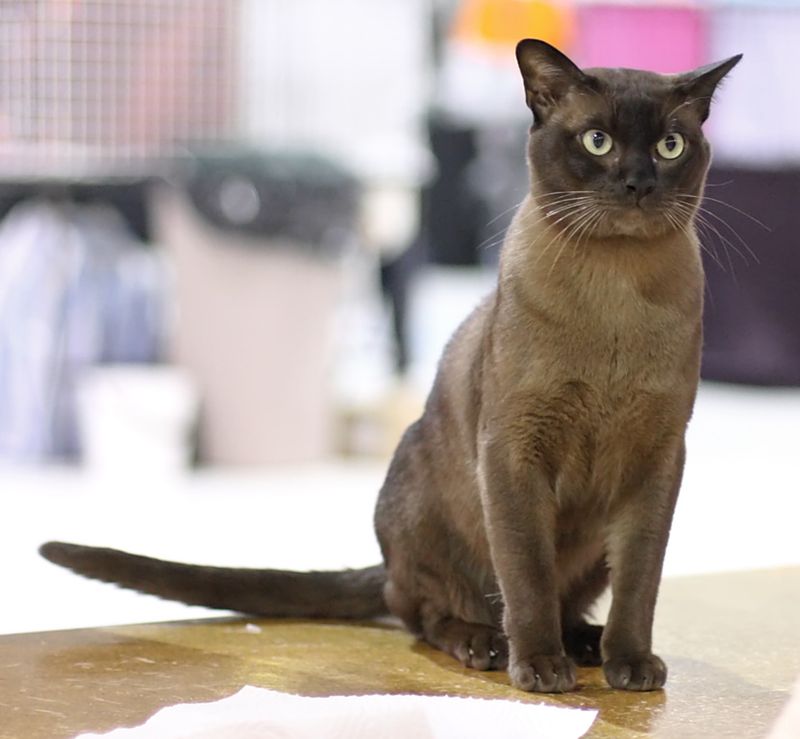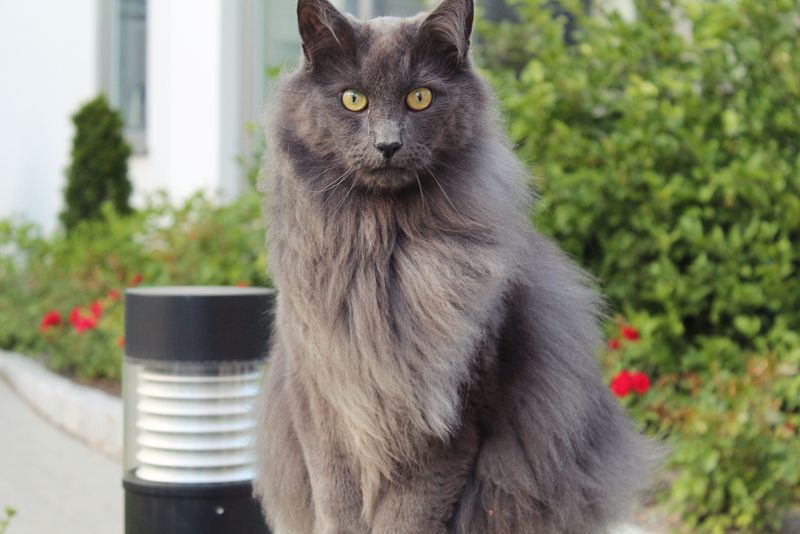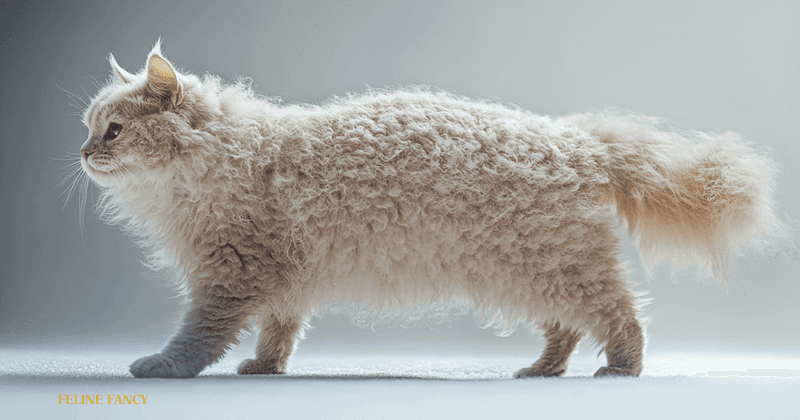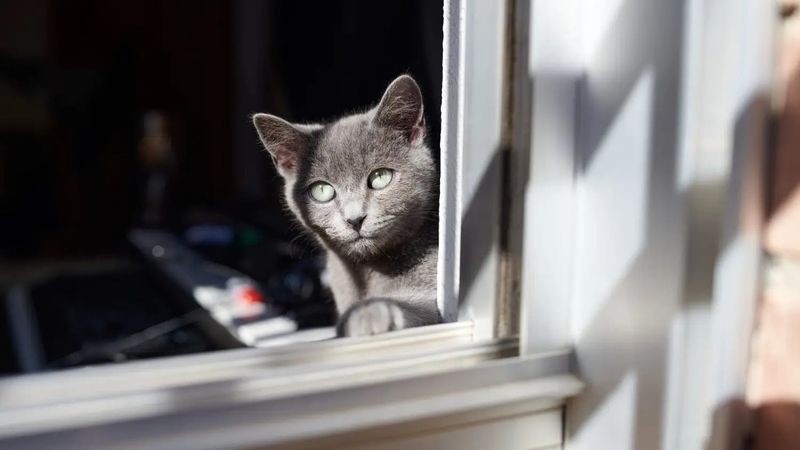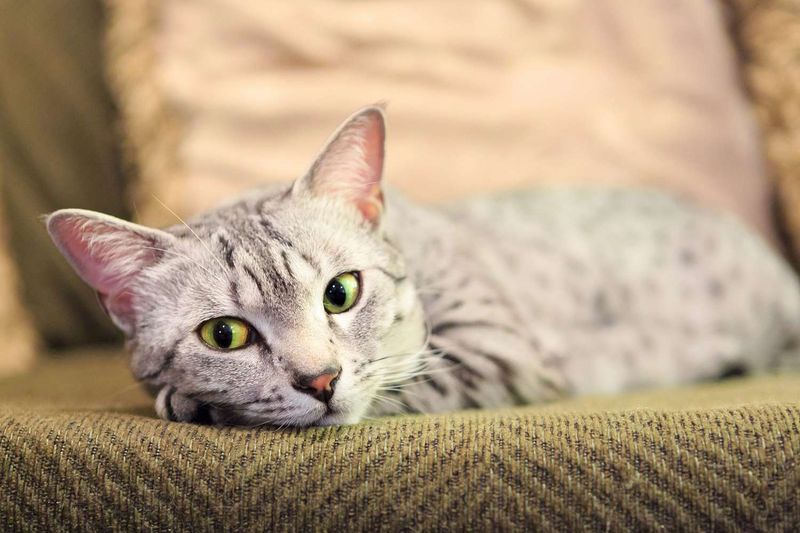📖 Table of Content:
- 1. Maine Coon
- 2. Sphynx
- 3. Scottish Fold
- 4. Bengal
- 5. Ragdoll
- 6. Siamese
- 7. Norwegian Forest Cat
- 8. Abyssinian
- 9. Persian
- 10. Russian Blue
- 11. Savannah
- 12. Munchkin
- 13. Devon Rex
- 14. Turkish Van
- 15. Cornish Rex
- 16. Japanese Bobtail
- 17. Tonkinese
- 18. Exotic Shorthair
- 19. Birman
- 20. Bombay
- 21. Singapura
- 22. Burmese
- 23. Nebelung
- 24. LaPerm
- 25. Korat
- 26. Egyptian Mau
Cats have fascinated people for thousands of years with their enigmatic personalities and striking looks. Their diversity ranges from sleek, hairless breeds to large, gentle giants. This variety showcases the rich and captivating world of feline breeds.
Each breed carries unique characteristics that set it apart from the rest. Some cats stand out for their unusual physical traits, while others are admired for their intelligence or playful nature. These distinctive qualities make every breed a special part of the feline family.
Many cat breeds also have intriguing histories that add to their allure. Their backgrounds often reveal connections to ancient cultures or unique origins. This blend of appearance, behavior, and heritage creates a fascinating tapestry within the cat world.
1. Maine Coon
Gentle giants of the cat world, Maine Coons can weigh up to 18 pounds and stretch nearly 4 feet from nose to tail tip. Their tufted ears, bushy tails, and shaggy coats help them survive harsh New England winters. Maine Coons are known for their dog-like personalities. They follow their humans around, play fetch, and even enjoy water – a rare trait among felines! Despite their imposing size, these cats are incredibly gentle with children and other pets. Their sweet chirping sounds, instead of a typical meow, add to their charm, making them one of America’s most beloved native cat breeds.
2. Sphynx
Contrary to popular belief, Sphynx cats aren’t completely hairless. Their bodies are covered with a fine peach-fuzz layer that feels like warm suede. Without fur to absorb body oils, these cats need regular baths to keep their skin clean. Temperature regulation is a challenge for the Sphynx. In cold weather, they seek warm spots or wear specially-made sweaters. During summer, they need sun protection to prevent burns. Personality-wise, Sphynx cats rank among the most affectionate and attention-seeking breeds. They’ll perform acrobatic stunts for attention and cuddle under blankets with their humans, using body contact for warmth.
3. Scottish Fold
Famous for their folded ears that give them an owl-like appearance, Scottish Folds originated from a spontaneous genetic mutation in a barn cat named Susie in 1961. Not all Scottish Folds have folded ears – kittens are born with straight ears that may fold around 3-4 weeks of age. These medium-sized cats have round faces, dense coats, and stocky bodies. Their laid-back temperament makes them excellent apartment dwellers who adapt easily to various living situations. Scottish Folds form strong bonds with their families. They enjoy interactive play but aren’t overly demanding of attention, preferring to be near you rather than on you – making them perfect companions for busy households.
4. Bengal
Bengals look like they belong in the jungle with their stunning spotted or marbled coats that shimmer with a unique glitter effect. Created by crossing domestic cats with Asian Leopard Cats, they retain wild looks while having domestic temperaments. Water fascination sets Bengals apart from typical cats. Many enjoy swimming, playing in water bowls, or joining their owners in the shower! Their high energy levels demand daily interactive play and climbing opportunities. Mental stimulation is crucial for Bengals. Puzzle toys, training sessions, and complex play scenarios keep their active minds engaged. Without proper enrichment, these intelligent cats may develop destructive behaviors as they seek ways to entertain themselves.
5. Ragdoll
Ragdolls earned their name from their tendency to go limp like a ragdoll when picked up. These large, semi-longhaired cats can weigh up to 20 pounds, with males significantly larger than females. Their striking blue eyes and color-point coats make them instantly recognizable. Temperament-wise, Ragdolls are exceptionally docile and trusting. They greet visitors without fear and follow their favorite humans from room to room like loyal shadows. Unlike many cats, they rarely extend their claws during play. Ragdolls develop slowly, taking up to four years to reach full maturity and size. Their patient, gentle nature makes them ideal for families with children or other pets, though their trusting nature means they should remain indoor cats.
6. Siamese
With piercing blue almond eyes, sleek frames, and distinct color points, Siamese cats are naturally dramatic. Their darker fur on ears, paws, and tail develops because of temperature-sensitive genes affecting cooler body parts. These cats are famous for their talkative and expressive vocalizations.
These cats express opinions on everything through a range of melodious and sometimes demanding vocalizations. Many owners describe having full “conversations” with their Siamese companions. Highly social and intelligent, Siamese cats form intense bonds with their humans. They suffer from separation anxiety when left alone for long periods. Their problem-solving abilities are legendary – many Siamese learn to open doors, cabinets, and even simple latches to access forbidden areas.
7. Norwegian Forest Cat
Built for Scandinavian winters, Norwegian Forest Cats feature water-resistant double coats, tufted ears, and heavily furred tails. Their strong claws and muscular bodies make them exceptional climbers who can scale rocks and trees that challenge even the most agile cats. Viking ships likely carried these cats as mousers, spreading them throughout Northern Europe. Norse mythology mentions large, mystical cats pulling the goddess Freya’s chariot – possibly inspired by these impressive felines. Despite their wild appearance, “Wegies” display gentle, patient temperaments. They form strong family bonds but respect personal space, rarely becoming overly demanding. Their slow maturation process means they don’t reach full magnificent size and coat development until age five.
8. Abyssinian
Abyssinians possess a distinctive ticked coat where each hair has bands of color, creating a shimmering effect that resembles wild rabbits or cougars. Archaeological evidence suggests they may be among the oldest domesticated cat breeds, with similar cats depicted in ancient Egyptian art. Boundless energy defines the Abyssinian personality. These cats remain playful and kitten-like well into old age. They investigate everything in their environment, often carrying small objects around or learning to turn on faucets. Abyssinians form strong bonds with their humans but aren’t typically lap cats. They prefer interactive attention – playing games, learning tricks, or helping with household tasks by staying close and observing. Their expressive eyes and ears communicate their emotions clearly to attentive owners.
9. Persian
Known for their luxurious long coats, flattened faces, and dignified manner, Persian cats exude opulence. Originating in ancient Persia—now Iran—their dense fur helped protect them from cold mountainous weather. They remain symbols of grace and refinement. Daily grooming requirements make Persians high-maintenance pets. Their dense undercoats mat easily without regular brushing, and their flat faces need daily cleaning to prevent tear staining. Many owners give them periodic “lion cuts” to reduce grooming needs. Unlike many active cat breeds, Persians prefer serene environments with established routines. They enjoy quiet observation from comfortable perches rather than wild play sessions. Their soft, musical voices are used sparingly, making their rare communications more meaningful to their devoted humans.
10. Russian Blue
With their plush double coats of shimmering blue-gray, Russian Blues are truly captivating. Their bright emerald green eyes stand out beautifully against their silvery fur. The dense fur rises gently from their bodies, lending them a soft, teddy-bear-like appearance. Shy around strangers but deeply devoted to their families, Russian Blues form intense bonds with their chosen people. They follow favorite humans from room to room while maintaining a dignified reserve. Their sensitive nature means they often hide when guests visit. Russian Blues thrive on routine and can become stressed by household changes. Their intelligence allows them to learn tricks, open doors, and even understand numerous human words. These cats have remarkably long lifespans, often reaching 15-20 years with proper care.
11. Savannah
Standing tall at up to 17 inches at the shoulder, Savannah cats are among the tallest house cats. These cats result from breeding servals—wild African cats—with domestic felines, blending wild spots and long limbs with friendly behavior. Athleticism is a defining trait of Savannahs. These cats can jump 8 feet vertically from a standing position and learn to open doors, windows, and cabinets with ease. Many enjoy playing fetch or walking on leashes like dogs. Savannah cats form strong bonds with their families but remain somewhat independent. Their intelligence requires mental stimulation through puzzle toys, training sessions, and interactive play. First-generation Savannahs are restricted in some areas due to their close relation to wild cats.
12. Munchkin
Featuring normal-sized bodies with distinctly short legs from a genetic mutation, Munchkins are small in height but quick in movement. They can still leap onto most furniture, often using strategic steps to access taller areas. Their agility surprises many. Controversy surrounds the Munchkin breed regarding ethical concerns about potential health issues. Responsible breeders carefully screen for problems, and studies show that when properly bred, these cats generally live normal, healthy lives spanning 12-15 years. Playful and sociable, Munchkins retain kitten-like behaviors throughout their lives. They excel at cornering during play due to their low center of gravity. Their curious nature leads them to collect small, shiny objects – earning them the nickname “magpies of the cat world.”
13. Devon Rex
Devon Rex cats sport distinctive wavy, short coats that feel like suede to the touch. Their large ears, prominent cheekbones, and mischievous expressions give them an elf-like or pixie appearance that turns heads. Some people call them “poodles of the cat world” due to their unusual coats. Boundless energy characterizes the Devon Rex personality. These cats perform acrobatic jumps, ride on shoulders, and investigate everything in their environment. They remain playful well into old age, never fully growing up. Devon Rex cats form intense bonds with their humans. They demand involvement in all household activities – from cooking to bathing to working at computers. Their minimal shedding makes them popular with allergy sufferers, though they aren’t truly hypoallergenic.
14. Turkish Van
With a distinctive “swimming cat” appearance, Turkish Vans display mostly white coats with color concentrated on their heads and tails. This rare marking is internationally known as the “van pattern.” Their semi-long coats resist water and lack an undercoat, which cuts down on grooming time. Natural swimmers, Turkish Vans earned the nickname “Swimming Cats” for their unusual love of water. Many join their owners in showers, play in sinks, or even swim in shallow pools. Their water-resistant coats dry quickly after aquatic adventures. Late bloomers, Turkish Vans take 3-5 years to reach full maturity. They bond strongly with a few chosen humans while remaining somewhat aloof with strangers. Their powerful hind legs enable spectacular jumps, allowing them to reach the highest points in any home.
15. Cornish Rex
With a genetic mutation affecting only the soft undercoat, Cornish Rex cats have a unique wavy fur lacking typical guard hairs. Their velvet-like coat feels warm to the touch due to elevated body temperatures. Their thin bodies, curved backs, whip tails, and big ears give them an elegant greyhound-like silhouette.Their oval paws allow them to manipulate objects with unusual dexterity – many learn to open doors or pick up small items. Cornish Rex cats remain playful throughout their lives, inventing games and performing “circus cat” antics well into old age. They bond intensely with their families and suffer from separation anxiety when left alone too long. Their minimal shedding makes them popular with allergy sufferers.
16. Japanese Bobtail
The short, bunny-like tails of Japanese Bobtails are the result of a natural genetic mutation. Every tail is unique, with a special pattern of bends, curves, and tufts of fur. These cats have been a beloved subject in Japanese art and culture for over a thousand years. Considered lucky in Japan, these cats inspired the famous beckoning Maneki Neko figurines seen in businesses worldwide. Tricolor (Mi-Ke) Japanese Bobtails are especially prized for bringing good fortune to their owners. Talkative and intelligent, Japanese Bobtails learn their names quickly and respond when called. They enjoy interactive games and can be taught tricks easily. Their athletic bodies allow impressive jumps and acrobatic feats, making them entertaining companions who provide both amusement and supposed luck to their families.
17. Tonkinese
Tonkinese cats blend the best features of their Siamese and Burmese ancestors. Their medium-sized, muscular bodies support a short, silky coat that requires minimal grooming. Their distinctive aqua eyes – neither the blue of Siamese nor the gold/yellow of Burmese – captivate admirers. Social butterflies of the cat world, Tonkinese cats cannot bear being alone. They thrive in households with other pets or where someone is home most of the time. Many learn to play fetch, walk on leashes, or perform tricks for attention. Vocal but not as loud as Siamese, Tonkinese cats communicate through a range of melodious sounds. They express opinions on household matters and hold “conversations” with their humans. Their playful nature persists throughout their lives, making them perpetual kittens at heart.
18. Exotic Shorthair
Bringing Persian charm to everyday life, Exotic Shorthairs offer all the classic beauty minus the high-maintenance fur. Known as “lazy man’s Persians,” they combine gentle expressions with a dense, easy-care short coat. Calm and undemanding, Exotic Shorthairs adapt well to apartment living. They enjoy interactive play sessions but don’t require constant attention or stimulation. Their quiet voices are used sparingly, making their rare communications more meaningful. Loyal companions, Exotic Shorthairs form strong bonds with all family members rather than selecting a favorite person. They greet visitors with curious interest rather than hiding. Their laid-back nature makes them excellent therapy cats for hospitals and nursing homes, where their soothing presence comforts patients.
19. Birman
Steeped in myth and mystery, Birmans captivate with flowing semi-long fur, striking blue eyes, and delicate white “gloves” on every paw. These revered temple cats of Burma (Myanmar) are believed to carry the divine blessings of a goddess, their white paws marking spiritual purity. Color development happens gradually in Birman kittens. They’re born completely white, with their point colors developing over weeks or months. The characteristic white gloves must extend precisely to the joints between toes and feet to meet breed standards. Gentle and patient, Birmans make excellent family cats. They enjoy being held and carried, adapting well to children and other pets. Unlike some longhaired breeds, their silky coats resist matting, requiring only weekly brushing to maintain their luxurious appearance.
20. Bombay
Sleek and striking, Bombay cats look like miniature black panthers with muscular bodies and glowing copper eyes. Bred in the 1950s by crossing Burmese and black American Shorthairs, they were designed to bring the wild panther’s allure into a domestic form. Warm to the touch, Bombays have higher body temperatures than most cats. They seek heat sources in winter, often burrowing under blankets or curling up against radiators. Their short, satin-like coats require minimal grooming but show dust easily. Bombays combine the social, attention-seeking nature of Burmese with the easygoing temperament of American Shorthairs. They form strong bonds with their families and enjoy being involved in all household activities. Many learn to walk on leashes and enjoy outdoor adventures with their humans.
21. Singapura
Tiny but captivating, Singapuras are the world’s smallest domestic cat breed, weighing only 4-8 pounds as adults. Their large eyes, oversized ears, and unique sepia-toned ticked coats give them a forever-kitten charm that melts hearts. Originally from Singapore’s streets, these cats were once considered pests. Now they’re celebrated as Singapore’s national cat, with statues along the Singapore River honoring their heritage. Their natural adaptations to tropical environments include minimal undercoat and efficient cooling systems. Singapuras combine small size with big personalities. They investigate everything in their environment, open cabinets, and learn tricks easily. Despite their diminutive stature, they’re surprisingly sturdy and athletic, capable of impressive jumps and acrobatic feats that belie their tiny frames.
22. Burmese
Burmese cats carry surprising weight for their size – their compact, muscular bodies feel like “bricks wrapped in silk” when lifted. Their short, glossy coats come in several colors, though the original sable brown remains most recognized. Social and people-oriented, Burmese cats demand involvement in all household activities. They follow their humans from room to room, help with tasks by supervising closely, and insist on sleeping with their favorite people. Many learn to ride on shoulders or curl around necks like living scarves. Burmese retain playful, kitten-like behaviors throughout their lives. They excel at learning tricks, playing fetch, and solving puzzle toys. Their moderate voices are used conversationally rather than demandingly, making them pleasant companions who communicate without being overly vocal.
23. Nebelung
Veiled in mystery, Nebelungs captivate with their misty blue-gray coats and shimmering silver-tipped guard hairs. Their name, meaning “creature of the mist” in German, perfectly reflects their ghostly, ethereal beauty. Long, silky fur forms a ruff around the neck and flowing plumes on the tail. Reserved and gentle, Nebelungs form deep bonds with their chosen humans while remaining cautious around strangers. They select one or two favorite people who receive their complete devotion and affection. Their sensitive nature means they thrive in quiet, stable environments. Intelligence defines the Nebelung personality. They learn household routines quickly and notice the smallest changes in their environment. Many develop precise daily schedules for eating, playing, and cuddling that they expect their humans to maintain.
24. LaPerm
LaPerms sport distinctive curly coats that range from loose waves to tight ringlets, creating a permanent “bad hair day” appearance that’s irresistibly touchable. The curls result from a spontaneous genetic mutation that appeared in a barn cat in Oregon in 1982. Each LaPerm has a unique curl pattern that can change throughout their lives. Seasonal shedding, pregnancy, or other hormonal shifts may cause them to lose and regrow their curls with different patterns. Some kittens are born bald and develop curls as they mature. LaPerms combine playful energy with affectionate temperaments. They enjoy interactive games but aren’t hyperactive, balancing play sessions with relaxing cuddle time. Their moderate shedding and naturally clean coats require minimal grooming despite their unusual texture.
25. Korat
Adorned with silver-tipped blue-gray fur and distinctive heart-shaped faces, Korats have long been celebrated in Thailand. For over six centuries, they’ve been regarded as living talismans of good fortune. Traditional Thai custom involves giving Korat pairs to newlyweds to ensure prosperity. Highly intelligent, Korats solve puzzles and learn tricks that challenge even the smartest cat breeds. They remember where toys are hidden and can open simple latches or doors. Their problem-solving abilities require mental stimulation through interactive toys and training. Korats form intense bonds with their chosen families. They supervise all household activities and prefer homes where someone is present most of the time. Their voices are used selectively – they’re not chatty cats, but communicate with soft chirps and trills when they have something important to say.
26. Egyptian Mau
Famed for their incredible speed, Egyptian Maus reach up to 30 mph, making them the fastest domestic breed. Their spotted patterns occur naturally, unlike many breeds developed through hybridization, and they appear in ancient Egyptian art, linking them to one of the oldest cat lineages. Unique physical adaptations set Egyptian Maus apart. A flap of skin extends from flank to back knee, allowing greater stride length when running. Their hind legs are longer than their front legs, contributing to their extraordinary speed and jumping ability. Sensitive and devoted, Egyptian Maus form strong bonds with their chosen people. They’re cautious around strangers but playful and affectionate with family. Their expressive eyes and tails communicate emotions clearly, from happiness to concern to playfulness.
